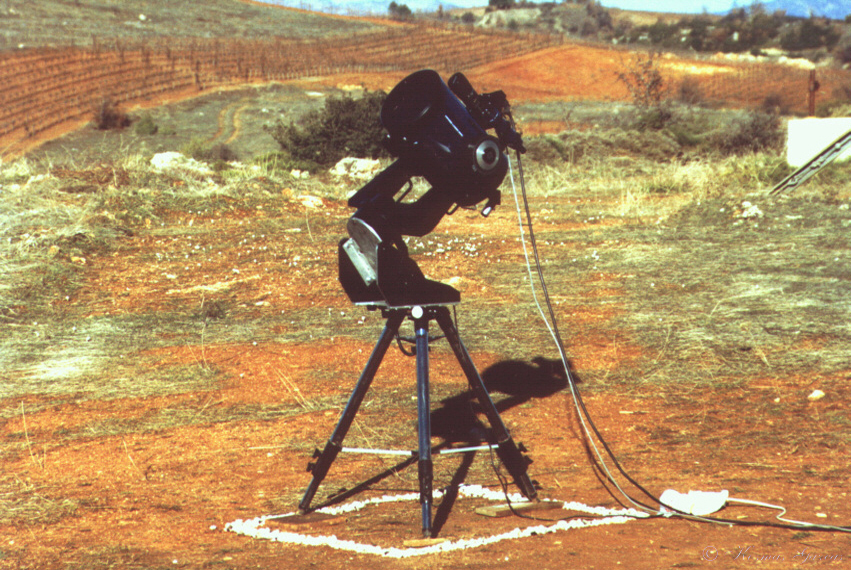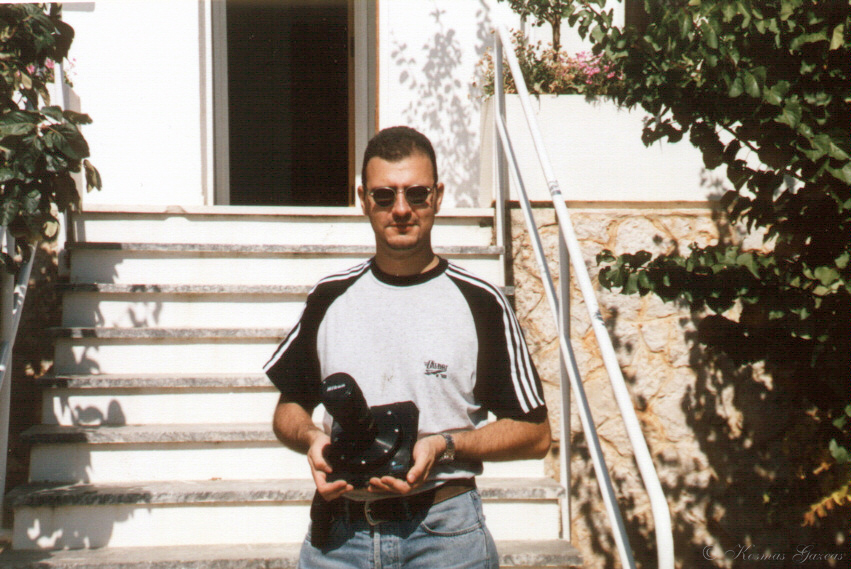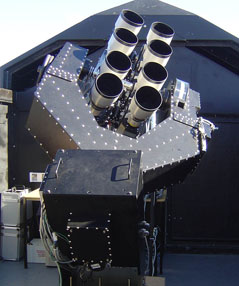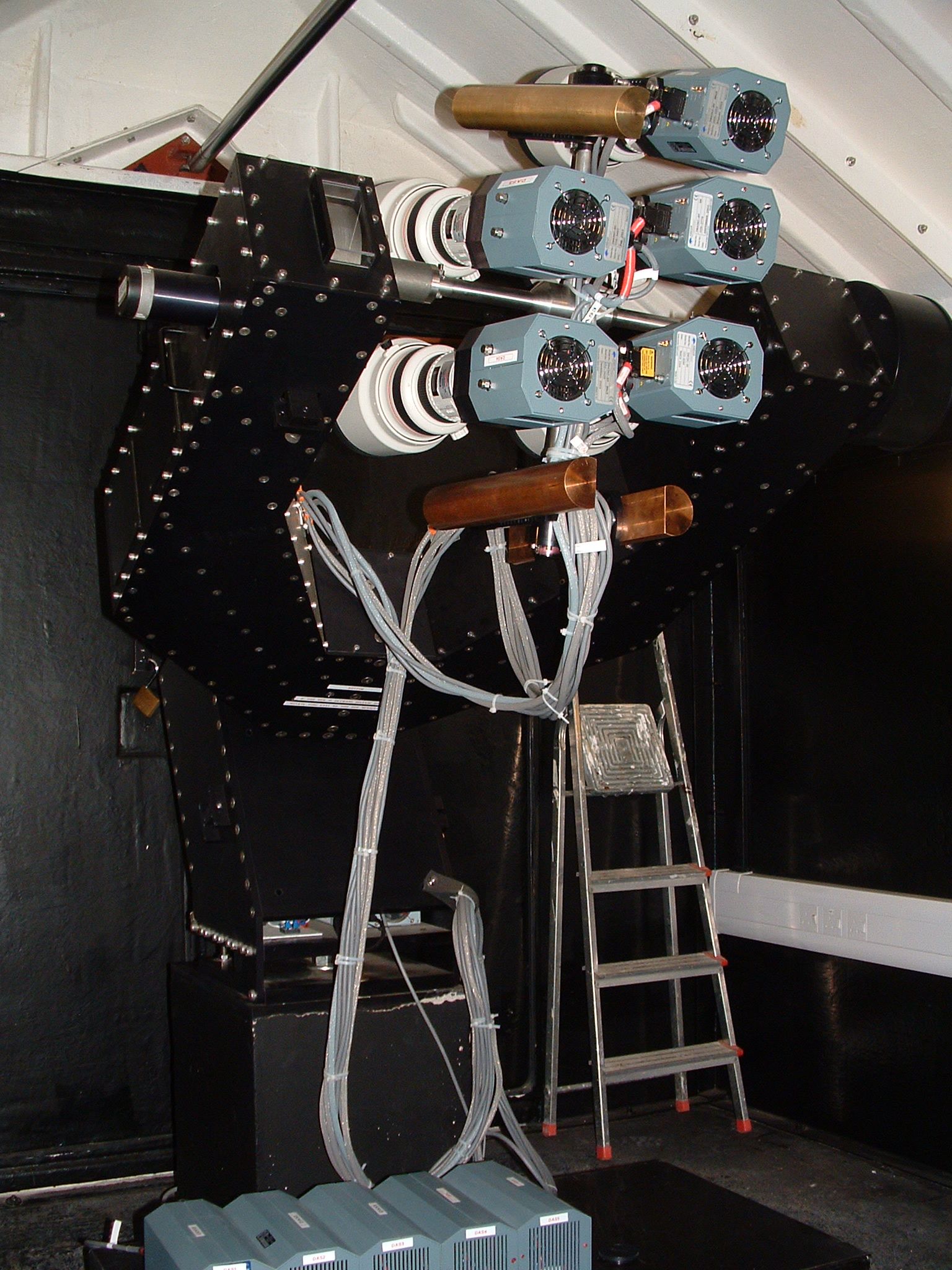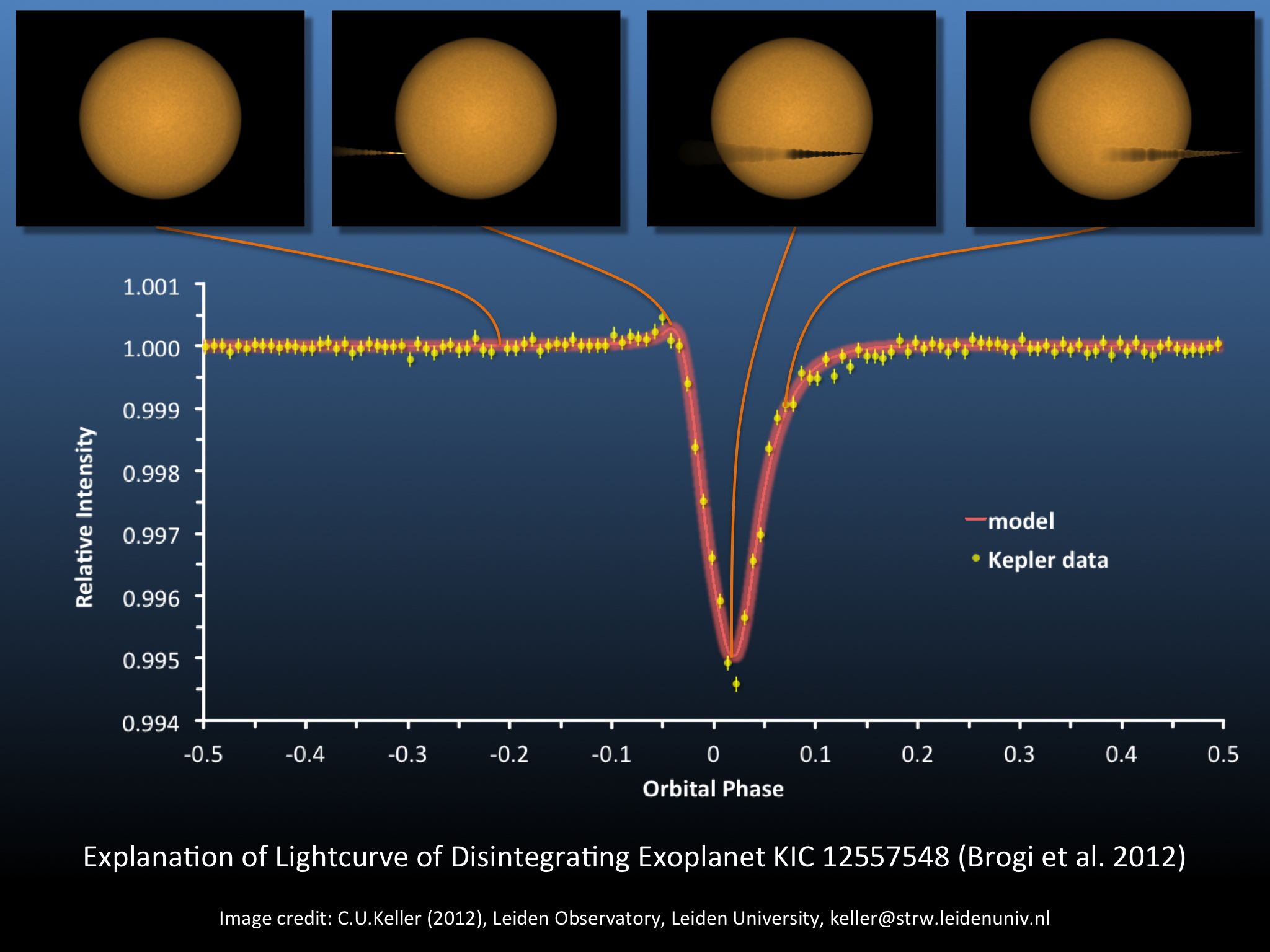Exoplanets Research
Wide Angle Search for Planets (WASP)The Wide Angle Search for Planets (WASP) project was first installed in La Palma, Canary Islands in 2000. Its primary aim was to detect extrasolar planets transiting across their star. My personal involvement on exoplanetary research started back in 2001, when the Wide Field Search for Planets (WASP) Project came in Greece. The first version of WASP instrumentation (WASP0) was built by Don Pollacco at Queens University Belfast, utilizing a wide-field (9-degree) 6.3cm aperture F/2.8 CCD camera (Apogee 10, 2Kx2K chip, 16-arcsec pixels). WASP0 rides "piggy-back" on a commercial small telescope, used for tracking. First light images taken in twilight from Belfast on 10 June 2000. During 20 June through 20 Aug 2000, Yianni Tsapras and Dave James observed a field in Draco with WASP0 at the La Palma Observatory in the Canary Islands. Between October 2001 and May 2002, WASP0 was observing from Kryoneri Astronomical Station, in Greece. This is when I took part on WASP Project, under the supervision of Emilios Harlaftis and the help of my friend and colleague Constantinos Stathoulis. In the frame of this project I installed the observational instruments and the necessary setup, needed to run a new international collaboration and I had also obtained the first observations of Hyades open cluster, as well as the Draco field. The project turned to produce many new variable stars and the 150 Gbyte o data are still under analysis. In the frame of this project, the new transient planet HD 209458b was followed-up.
WASP0 was moved in Greece and operated at Kryoneri Observatory in 2001-2002. Optical and mechanical setup were done by Kosmas Gazeas and Constantinos Stathoulis, under the supervision of Emilios Harlaftis.
Observations were conducted in two fields, in Draco and Hyades (in Taurus). The results were very promising from the first days. However, the sudden death of our colleague Emilios Harlaftis in February 2005 disconnected the team and there was no longer collaboration ever since.
Super Wide Angle Search for Planets (SWASP)
Today the SuperWASP observing campaign consists of two robotic observatories in La Palma and South Africa, that operate continuously all year around, allowing full coverage of both hemispheres of the sky.
SuperWASP detectors are placed at northern (left) and southern (right) hemisphere, covering the entire sky.
The exoplanet KIC 12557548b
In 2009 KEPLER satellite mission came into the scene. The unprecedented detail of space observations gave the opportunity to astronomers to discover several hundreds of new exoplanet systems. These new discoveries play an important role in our understanding of planetary formation. KIC 12557548b is an example of such a case. It is a transiting extrasolar planet, discovered by Rappaport et al. in 2012, which has possibly a comet-like tail. KIC 12557548b is becoming a prototype of a new class of extrasolar planets, which are so close to their host stars that are being disintegrated creating a spectacular come-like dusty tail. This tail, not the planet itself, causes the transit like events. The main aim of the proposal is to put constraints on the chemical composition, particle size, mass loss and other dust properties of the planet and its tail. Our team carries out multi-wavelength observations of the planetary transits after 2014 and 2015, using the 2.3 m Aristarchos Telescope at Helmos Observatory.
Artistic impression of the exoplanet KIC 12557548b and a light curve explanation model.
People involved in this project are:
Educational literature on planets and exoplanets:
Those who are interested to enrich their knowledge on planets and exoplanets research, there are several books with valuable and interesting information. Some of these are presented below, and they refer to both Greek and International literature. The books are highly recommended to everybody who is interested to explore this field of astrophysics.Solar System:
Exoplanets:
